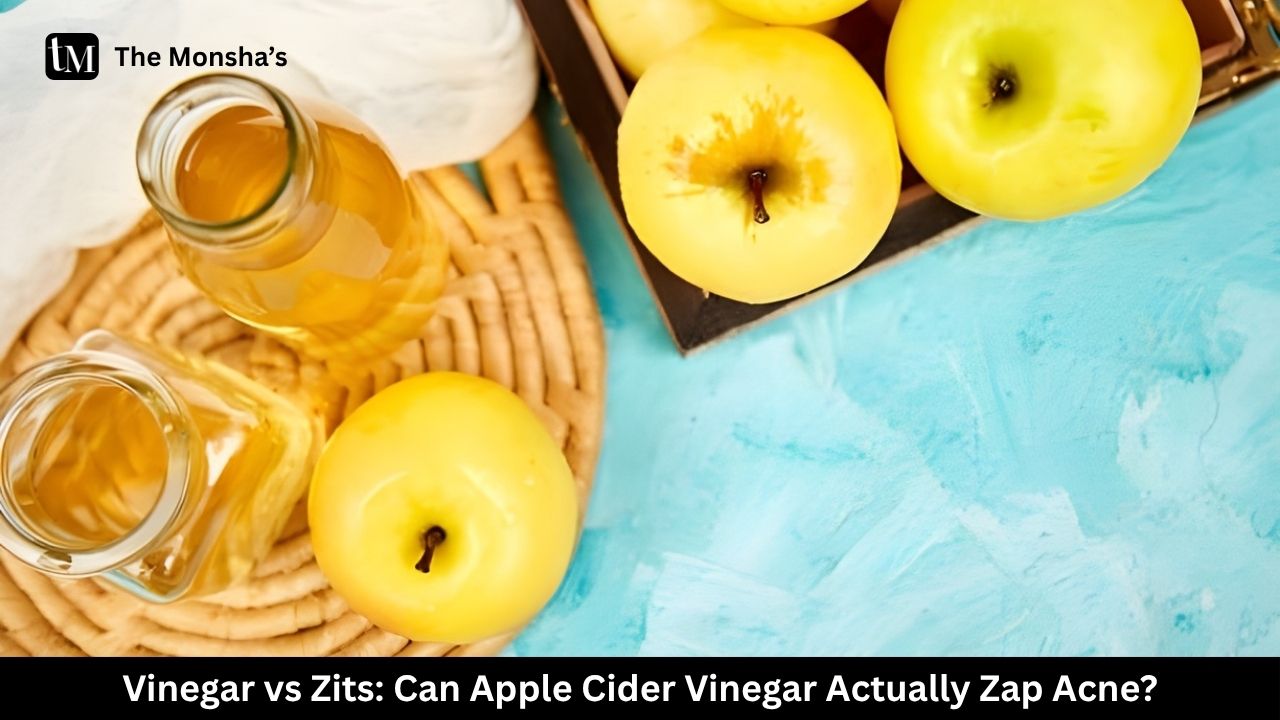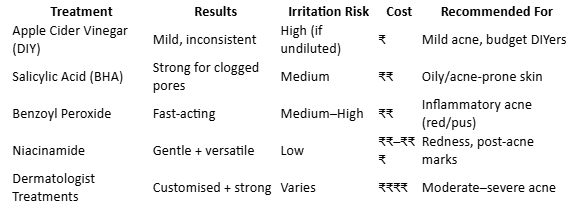
"Jitna khatta taste mein, utna hi dangerous ho sakta hai face pe!"Kya pata — “ACV lagake tune kya kiyaaaa...” 🎵Because honestly, at this point, I’ve tried everything short of chanting mantras to clear acne. Enter: Apple Cider Vinegar — the OG kitchen remedy that TikTok can’t shut up about and every “natural skincare” Pinterest pin swears by.
But before you start pouring vinegar straight onto your face like it’s a salad, let’s talk. ACV is not some fairy-tale potion, but it does have some science behind it — and some major red flags too if you misuse it.
Apple Cider Vinegar (ACV) has natural acids like acetic, malic, and lactic — which might help kill acne-causing bacteria and mildly exfoliate the skin. BUT it’s highly acidic, can burn or damage your skin if used wrong, and results vary wildly. Use diluted, patch test always, and don’t throw your dermatologist out the window just yet.
Apple Cider Vinegar is fermented apple juice. Sounds cute. But during fermentation, it turns into this acidic potion loaded with acetic acid, some malic and lactic acid, and beneficial bacteria.
It’s been used for gut health, dandruff, scalp detox, toners, foot soaks, salad dressings... and now, acne. Natural skincare lovers say it can:
Fair. But also — yeh sab sunke skin thoda darr bhi gayi hai. 😬
Here’s how it might work:

Sounds solid on paper. But skin isn't paper — and we’re all built different.
There are lab studies showing acetic acid has antimicrobial properties. Great. But most of those aren’t done on actual human skin. Or acne-prone skin, for that matter.
What we do know:
So yes, there’s potential. But there’s also pain. Proceed wisely.
Let’s not cancel it entirely — ACV can do a few things right:
✅ Kills Surface Bacteria
Helps reduce bacterial load on the skin. Not a replacement for actives, but may support them.
✅ Gentle Exfoliation
ACV may loosen dead skin cells, helping prevent clogged pores (especially blackheads + whiteheads).
✅ Brightens Post-Acne Marks
Some users say it reduces dark spots over time — likely due to mild acid content.
✅ Budget-Friendly
One bottle lasts forever and costs less than your Starbucks.
Let’s get real. ACV is very acidic (pH ~2–3). Skin’s pH is around 5. Using ACV undiluted is basically asking for trouble.
❌ Skin Burns & Irritation
There are documented cases of chemical burns from undiluted ACV. Oily skin may survive. Sensitive skin? Not so lucky.
❌ Disrupts Skin Barrier
Overuse can damage your acid mantle, leading to more breakouts, redness, flaking.
❌ Inconsistent Strength
Not all ACVs are equal. Brands differ in acidity, purity, and quality — you never really know what you’re putting on your skin.
❌ Smell
Let's be honest, the stuff stinks. Your partner might ask if you’ve been pickling cucumbers.
Okay — if you’re the daring type, here’s the safest way to approach it:
Start 2x a week and observe. Agar jal raha ho, toh bas karo yaar.

🕰️ If it works at all...
But remember — irritation can also show up in the first 1–3 uses. Don’t wait for your skin to peel before quitting.

Q: Can I use ACV daily?
A: Please don’t. Twice a week max. Even then, keep it diluted.
Q: Does it help with cystic acne?
A: Nope. You’ll need medical-grade treatments for that.
Q: Should I leave it on overnight?
A: Unless you enjoy waking up with red patches — no.
Q: Can I use ACV with other skincare?
A: Avoid using it alongside acids, retinol, or exfoliants.
Q: Is organic ACV better?
A: If you’re applying it on your face, go for raw, organic “with the mother” versions — but still dilute!
Let’s call it what it is: a risky DIY treatment that might give mild results when used very carefully — or cause full-blown skin chaos if misused. It’s not evil, but it’s not magic either.
If your acne is hormonal, cystic, or persistent, you need a derm — not DIY TikTok tonics. But if you're dealing with mild breakouts and you’re curious, go ahead — dilute it, patch test, and pray. 🙏
Want something safer, better, and way less smelly?Book an acne-safe facial at home with The Monsha’s — because your skin deserves more than salad dressing 🥗✨